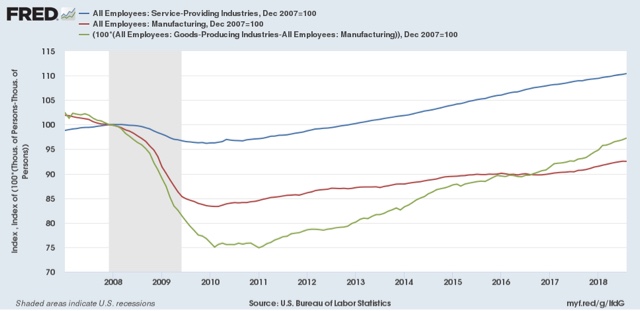In the past week, there’s been a little highbrow relitigation of the drivers of the “Great Recession” between Paul Krugman and Ben Bernanke. Bernanke plumps for it having been a “credit event” — and as to the crisis of 2008, he is clearly correct — while Krugman says it was primarily a “housing event,” although Krugman also acknowledges that he is mainly speaking of the aftermath from 2009 onward.
Since neither the 10% decline in housing prices between 1989 and 1992, nor the Nasdaq internet bubble of 1999-2000 managed to cause the worst downturn in 75 years, my own view is that it was precisely because there was a credit bubble in the biggest asset that is owned by a majority of Americans — for which there was no financial help forthcoming to the middle class — that the effects were so longstanding. Had the government — as it did for the 1930s Dust Bowl — bought up or crammed down existing mortgages, and took repayment of the loans out of housing appreciation whenever the owners eventually sold, it is likely that the consumer rebound from the recession bottom would have been much more “V”-ish.
But neither Krugman nor Bernanke, so far as I can tell, mentions a third important reason for the slowness of the recovery: the second installment of the China shock. Because it is crystal clear that businesses decided, once demand picked up beginning in late 2009, to move plants and hiring overseas.
This is plain when we look at how employment recovered. Services employment recovered in relatively “V”-ish fashion: two years down and three years up. Even goods employment ex-manufacturing came back in more delayed fashion and is at 97% of peak 2007 levels. But manufacturing employment only began to turn very late and, at 92.5% of peak 2007 levels, is still far behind:

When we look at industrial production itself, a similar pattern unfolds: mining production, led by fracking, took off quickly, while manufacturing industrial production turned more slowly, and has never recovered all the way back to where it was in 2007. In other words, IT’S NOT JUST ROBOTS!!!













Leave A Comment